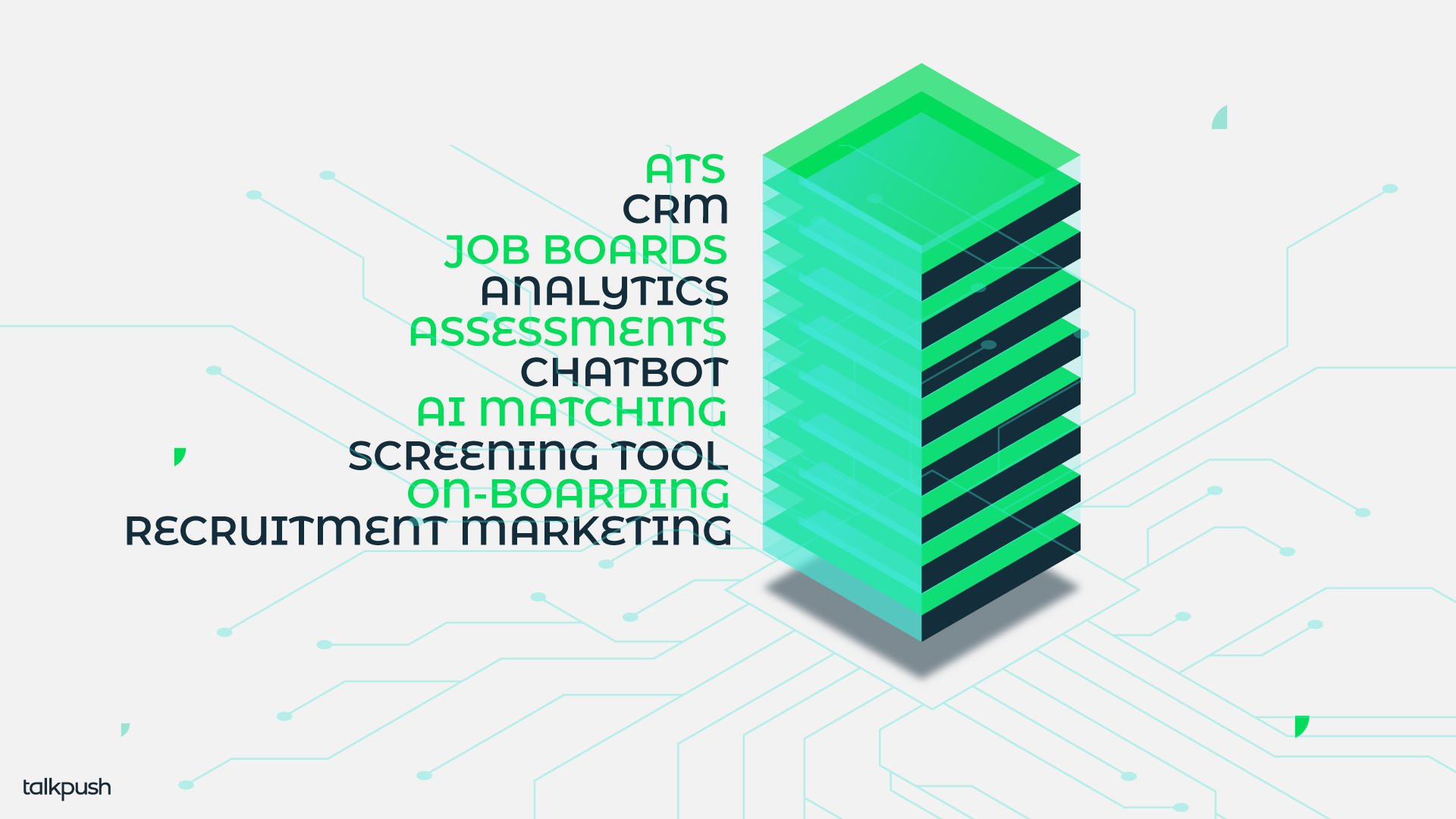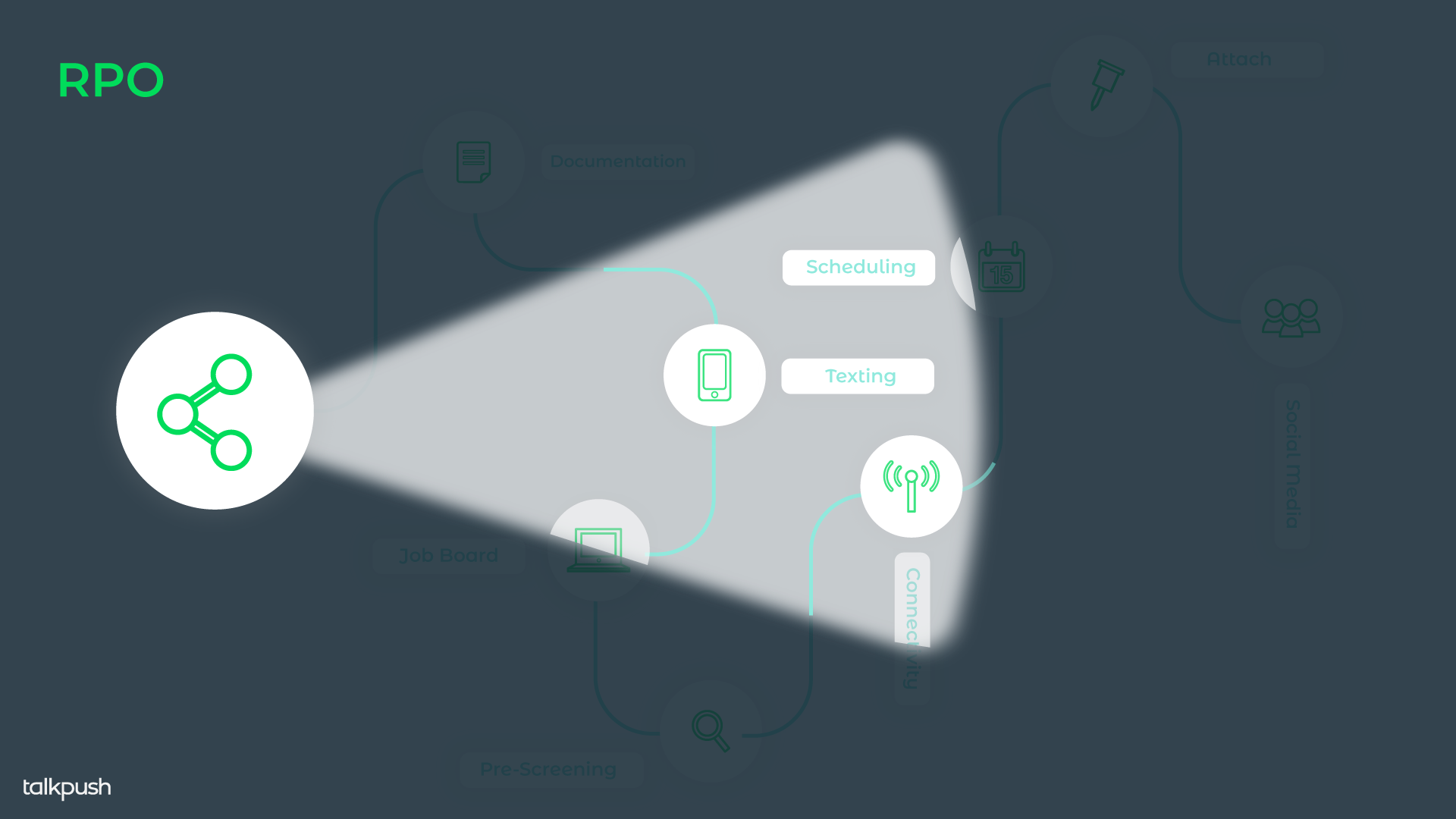Will Robotic Process Automation (RPA) push RPOs out of business? Too early to say, but it is already redefining their role in the recruitment ecosystem, as purveyors of technology and automation.

Robotic Process Automation (RPA) is becoming another buzzword in the TA Tech space, with good reason. Automating repetitive tasks is the foundation of competitive recruitment strategies. By automating functions hiring teams don’t actually need humans for, such as answering FAQs or pre-qualifying candidates, employers are seeing quantifiable results, as the hours saved are relatively easy to measure. With recruiters spending less time sifting through resumes, they can focus their attention on building a competitive advantage for the employer brand they represent.
Most employers are already using some degree of automation in their processes, and an astonishing 95% of U.S companies already use robots. From email marketing to customer service interactions via chatbots, it has become normalized handing over these tasks to bots in order to meet the public’s growing demand for instant responses in all interactions. Even small businesses can now afford automation and chatbots, with hundreds of pay-as-you-go software options available online.
Automation is an essential part of high volume recruitment operations. A conversational agent can automate up to 98% of top of funnel tasks. Studies show that candidates are just as happy to communicate with a bot as they are with a human. To be fair, the alternative usually meant never hearing back anything at all.
The Tech Stack
 The hard part about automation is when you start automating diverse sequences, adding one technology on top of an existing tech stack and making older legacy systems work with new ones. This is why tech buyers often find themselves in an awkward position, after buying automation solutions that don’t integrate well, only to create processes that are less efficient than before. To avoid this scenario, project teams must anticipate and eliminate these potential failures:
The hard part about automation is when you start automating diverse sequences, adding one technology on top of an existing tech stack and making older legacy systems work with new ones. This is why tech buyers often find themselves in an awkward position, after buying automation solutions that don’t integrate well, only to create processes that are less efficient than before. To avoid this scenario, project teams must anticipate and eliminate these potential failures:
-
Poor interdepartmental communication — buying a tool that already exists in another area of the company
-
Low adoption rates — without an expert to translate business needs into technology functions, recruiters don’t always know how or when to use new tech
-
Manual data entry — without proper APIs and a tech team to run the integrations, recruiters find themselves logging in to multiple systems and manually exchanging information between them
-
Weak results — automation is a powerful ally to optimize processes, but needs knowledgeable humans to run it. Adopting automated workflows without aligning them to company objectives or standardizing certain conventions can leave a chunk of candidates up in the air.
To prevent these problems from happening, companies have two options: (1) build in-house tech expertise (which could take years), or (2) outsource to the newly de-facto automation experts: RPOs.
RPOs - The Tech Translators of Recruitment
 Recruitment Process Outsourcing (RPO) has been around since before automation became the main theme. As the experts in recruitment practices, they are usually early adopters in automation, looking for any edge they can find to meet quotas with limited resources. This automation often goes unnoticed .
Recruitment Process Outsourcing (RPO) has been around since before automation became the main theme. As the experts in recruitment practices, they are usually early adopters in automation, looking for any edge they can find to meet quotas with limited resources. This automation often goes unnoticed .
“The client doesn’t see me automating my billing process or using software to cleanse data files. What they see is ‘I place an order with you and you responded fast.’ In the field of automation, our focus has been on chatbot tech, and we’re making leaps and bounds of headway with on-boarding.” — Tim Meehan, VP of Emerging Technologies, Pontoon
The intersection between RPO and RPA has become more complex. Some employers use both for different things and feel that even specialized RPOs may struggle to achieve the highest levels of automation for some jobs. Take Pontoon, a leader RPO which is part of the the Adecco Group. They have an Emerging Technology team which is dedicated to technology research and adoption. The team finds many companies struggle to balance the long term need to innovate compared to the short term fear of the challenges those changes could bring.
“It’s a work in progress for us, everybody that tells you it’s easy, is just kidding you. In many cases, RPOs don’t own the process the client wants to administer,” says Meehan. On the other side of the spectrum, companies that make their core tech stack central to their operations end up closing themselves off to customization.
More Bang for your Buck
 When it comes to talent acquisition, hiring managers need to rethink how they want to allocate budgets. RPO providers typically charge between 5% and 10% of hired personnel salary. On the other hand, choosing to invest in in-house automation is not cheap either: they have to account for the salaries of a project management and technical team to handle integrations, added to the costs of the software subscriptions, and all without any guarantees for results (poor adoption is always a risk). And this doesn’t even account for potential downsides, such as the increasing privacy concerns that make companies think twice about opening their processes to external tech providers.
When it comes to talent acquisition, hiring managers need to rethink how they want to allocate budgets. RPO providers typically charge between 5% and 10% of hired personnel salary. On the other hand, choosing to invest in in-house automation is not cheap either: they have to account for the salaries of a project management and technical team to handle integrations, added to the costs of the software subscriptions, and all without any guarantees for results (poor adoption is always a risk). And this doesn’t even account for potential downsides, such as the increasing privacy concerns that make companies think twice about opening their processes to external tech providers.
“In the future, companies are going to be stressed by the data privacy and data security infrastructure risks of sourcing tech internally. A lot of the technology will be unaccessible and blocked by firewalls as companies adapt from past data breaches.” - Tim Meehan, VP of Emerging Technologies, Pontoon
Pontoon knows this, and therefore co-builds solutions with their clients. They look at each company and weigh the benefits of a pre-built tech stack vs. customized processes built for efficiency.
The Filipino energy company, AboitizPower Coal Business Unit, uses both RPO and internal recruitment automation such as chatbots. Averaging about 15 hires a month, they are able to meet their targets by combining both approaches, sourcing half of their future hires via an automated in-house process, and half through their selected RPO provider.
Malu A. Inofre, VP of Human Resources at AboitizPower Coal BU, says that although both processes rely on automation, which helps to track data better, she hasn’t decided what the right mix between the two is.
“Both processes have some level of automation, particularly when it comes to talent attraction data which can eliminate the use of google sheets/excel sheets in monitoring applicants, recruitment cycles, fill rates, etc. We need to see KPI and data trends that are currently done manually because it is difficult to accurately measure the performance of recruitment. ”– Malu Inofre, VP of Human Resources, AboitizPower Coal BU.
At the end of the year, the company may choose to change the mix between their outsourcing company or their in-house RPA. This decision is made even more complex by the changing needs of the organization and the talent market, which may mean that 80% of annual hiring happens in just a couple of months to complete the fill-rate at the onset.
Cutting Out the Middleman?
 As Tech stacks grow ever more complex to stay competitive in a 24/7 global market, tech expertise is crucial and expensive. Hiring an RPO with a solid stack that they already know how to adapt to your business goals can turn out to be the cheaper option. Plus, it’s easier.
As Tech stacks grow ever more complex to stay competitive in a 24/7 global market, tech expertise is crucial and expensive. Hiring an RPO with a solid stack that they already know how to adapt to your business goals can turn out to be the cheaper option. Plus, it’s easier.
“You have to be quality and automation experts. You have to be able to define the optimal quality delivery and experience and then automate, certainly that’s we’re doing here.” – Tim Meehan, VP of Emerging Technologies, Pontoon
That’s the landscape today. RPO’s will continue to be RPA vendors’ top customers, as companies adapt and slowly implement the tech themselves.
The future of recruitment promises to include a wide scope of collaboration between these two business models, with much still to be explored in terms of overlap and coexistence. High-volume hiring companies will definitely have to shift towards in-house automation, but still consider outsourcing the most tech-heavy aspects to RPOs, and find a way to implement both of these solutions in harmony.


